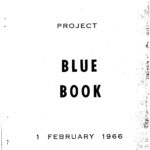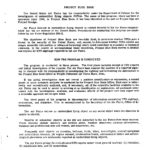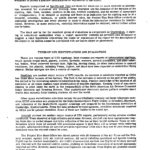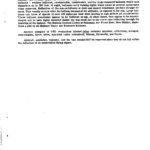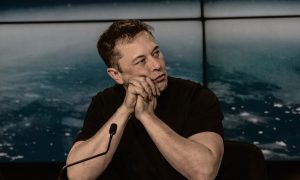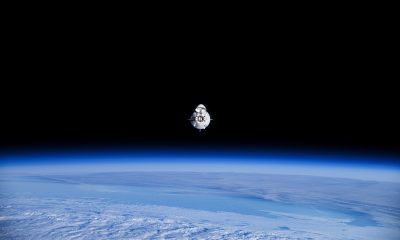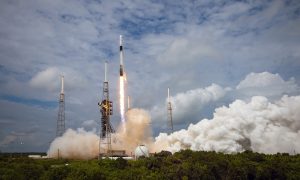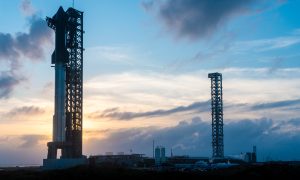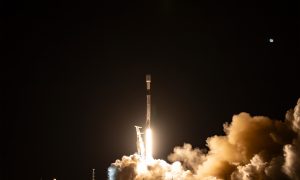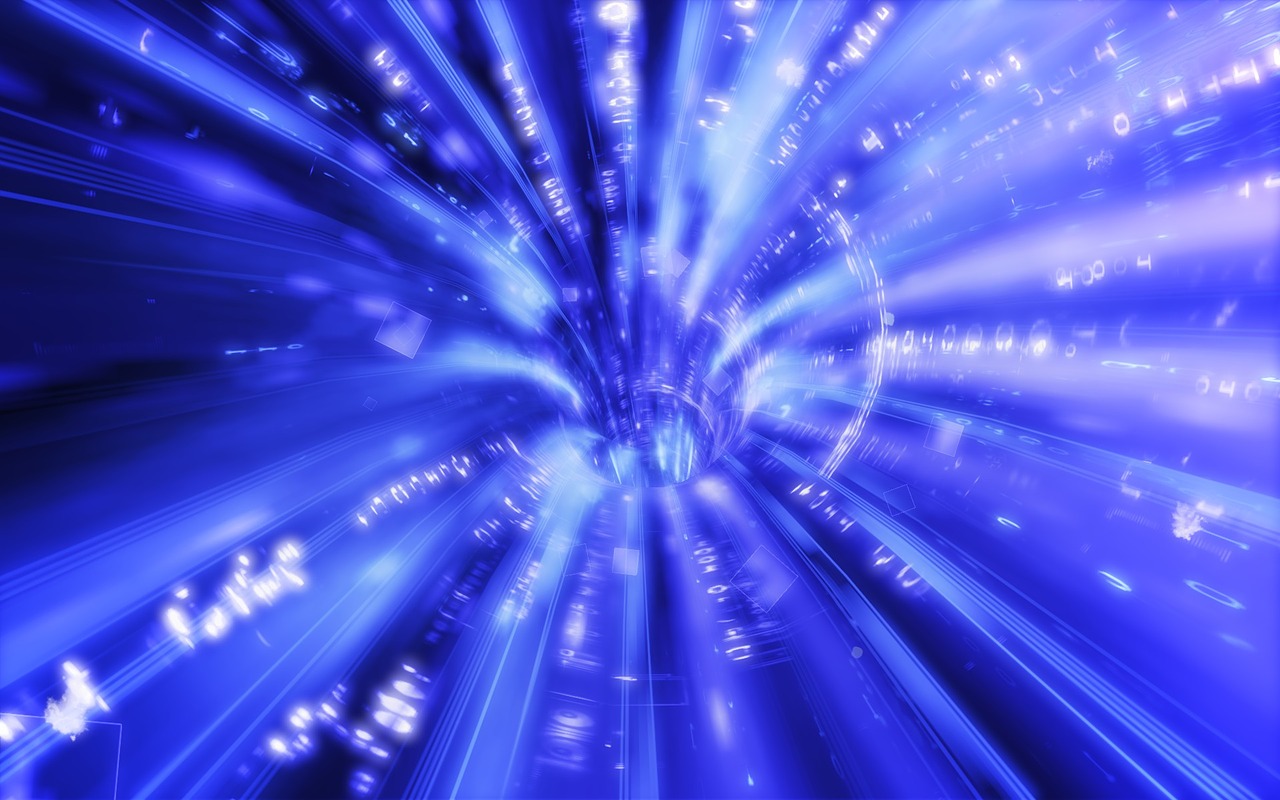

News
US Department of Defense documents reveal wormholes and extra dimensions research
As part of a US Department of Defense (DoD) project named the Advanced Aerospace Threat Identification Program (AATIP), the US government funded research involving wormholes and extra dimensions, according to documents released Wednesday in response to a Freedom of Information Act (FOIA) filed in August 2018. A communication addressed to Senators John McCain and Jack Reed, then-chair of the Senate Committee on Armed Services, provided a list of 38 research papers produced under the program, the titles of which indicated several surprising topics. The research disclosed indicates that the government is just as interested in the application of fantastic sounding technologies as science fiction creators and aficionados.
UPDATE: The correspondence to Senators McCain and Reed was first released to former Deputy Director in the UK’s Directorate of Defense Security, Nick Pope, by the US Defense Intelligence Agency’s Office of Corporate Communications on January 16, 2018. An article published in The Guardian in October last year written by Mr. Pope described his interest in the paper’s release after noting a DIA briefing on AATIP given to a Congressional committee in April according to the Congressional Record. The FOIA request was sought and obtained separately from Mr. Pope’s efforts.
Some of the titles of the publications produced with AATIP funding included:
- Invisibility Cloaking, by Dr. Ulf Leonhardt of Univ. of St. Andrews
- Traversable Wormholes, Stargates, and Negative Energy, by Dr. Eric Davis of EarthTech International
- High-Frequency Gravitational Wave Communications, by Dr. Robert Baker, GravWave
- Antigravity for Aerospace Applications, Dr. Eric Davis, EarthTech International
- Concepts for Extracting Energy from the Quantum Vacuum, Dr. Eric Davis, EarthTech International
- An Introduction to the Statistical Drake Equation, Dr. Claudio Maccone, International Academy of Astronautics
- Space-Communication Implications of Quantum Entanglement and Nonlocality, Dr. J. Cramer, Univ. of Washington
The research indicated may seem unusual for a government program, but AATIP’s $22 million dollar purpose, the existence of which was first reported by the New York Times in 2017, was to investigate foreign advanced aerospace weapons threats. Thus, studies into technologies that have years of development to go before having direct applications would be within the scope of the investigation.
The invisibility cloaking, for example, is based on optical illusions achieved through light manipulation which a foreign entity could utilize in some fashion, and a quick Google search of the report’s author, Dr. Ulf Leonhardt, will lead you to his TED Talk explaining the technology. EarthTech International, the institute responsible for some of the more fictional-sounding technology research, is an organization dedicated to exploring theories and topics as they may apply to develop innovative propulsion and energy sources, most of the members of which have PhDs and backgrounds in theoretical and experimental physics. In other words, the topics are well known in the science community, and the DoD is interested in knowing if there are security threats involving their applicability.
- A summary of the Air Force’s Project Blue Book. | Credit: US Department of Defense/US Air Force
- A summary of the Air Force’s Project Blue Book. | Credit: US Department of Defense/US Air Force
- A summary of the Air Force’s Project Blue Book. | Credit: US Department of Defense/US Air Force
- A summary of the Air Force’s Project Blue Book. | Credit: US Department of Defense/US Air Force
- A summary of the Air Force’s Project Blue Book. | Credit: US Department of Defense/US Air Force
The background of AATIP is perhaps a bit more interesting to the conspiracy-minded than the research topics provided to Congress. The program began in 2007 and supposedly ended in 2012, although that claim is disputed by the program’s DoD participants. Its initiator was former Senator Harry Reid of Nevada, whose longtime interest in space phenomena is well known in the UFO community. Robert Bigelow – the same man whose Bigelow Aerospace company has successfully installed an expandable module on the International Space Station in 2016 – received a majority of AATIP’s funding to study UFO reports. Bigelow is also well-known in the UFO community for his belief in alien Earth visitation. AATIP isn’t the first known expenditure by the US government on unusual technology – the Air Force’s Project Blue Book (1952-1969) investigated similar phenomena and is currently the subject of a History Channel dramatization by the same name.
UPDATE: Mr. Pope, whose background includes a post at the UK Ministry of Defense’s Secretariat (Air Staff) division where he mirrored the type of work done by Project Blue Book, has provided Teslarati with further context for the revealed AATIP research:
“…I’ve been quoted in various media articles discussing the letter I obtained, but wanted to address the main question I’ve been asked, concerning what this new revelation tells us about the true nature of AATIP. The letter describes the AATIP program as being one looking at next-generation aerospace threats. That’s been the way the DOD and DIA have spun this story from day one. Skeptics of some of the more exotic claims made about AATIP say this isn’t spin at all, but an accurate description of the program. Fair enough, but people should also bear in mind that Harry Reid described the program in similar terms in his June 24, 2009 letter to William Lynn III, and Reid has been very clear that yes, AATIP looked at UAP [Unidentified Aerial Phenomena]…People won’t get a definitive answer…unless and until further AATIP paperwork is released.” – Nick Pope, January 2, 2019
The FOIA request revealing the AATIP research papers was filed by Steven Aftergood, director of the Federation of American Scientists’ Project on Government Secrecy, a group dedicated to promoting public access to national security information. It regularly makes FOIA requests for the public’s benefit within this realm and also publishes government documents otherwise undisclosed or hard-to-find related to public or intelligence policy. A visit to the group’s website will provide links to their work through multiple presidential administrations and resource links for anyone interested in delving further into government secrets.
News
Tesla cleared in Canada EV rebate investigation
Tesla has been cleared in an investigation into the company’s staggering number of EV rebate claims in Canada in January.

Canadian officials have cleared Tesla following an investigation into a large number of claims submitted to the country’s electric vehicle (EV) rebates earlier this year.
Transport Canada has ruled that there was no evidence of fraud after Tesla submitted 8,653 EV rebate claims for the country’s Incentives for Zero-Emission Vehicles (iZEV) program, as detailed in a report on Friday from The Globe and Mail. Despite the huge number of claims, Canadian authorities have found that the figure represented vehicles that had been delivered prior to the submission deadline for the program.
According to Transport Minister Chrystia Freeland, the claims “were determined to legitimately represent cars sold before January 12,” which was the final day for OEMs to submit these claims before the government suspended the program.
Upon initial reporting of the Tesla claims submitted in January, it was estimated that they were valued at around $43 million. In March, Freeland and Transport Canada opened the investigation into Tesla, noting that they would be freezing the rebate payments until the claims were found to be valid.
READ MORE ON ELECTRIC VEHICLES: EVs getting cleaner more quickly than expected in Europe: study
Huw Williams, Canadian Automobile Dealers Association Public Affairs Director, accepted the results of the investigation, while also questioning how Tesla knew to submit the claims that weekend, just before the program ran out.
“I think there’s a larger question as to how Tesla knew to run those through on that weekend,” Williams said. “It doesn’t appear to me that we have an investigation into any communication between Transport Canada and Tesla, between officials who may have shared information inappropriately.”
Tesla sales have been down in Canada for the first half of this year, amidst turmoil between the country and the Trump administration’s tariffs. Although Elon Musk has since stepped back from his role with the administration, a number of companies and officials in Canada were calling for a boycott of Tesla’s vehicles earlier this year, due in part to his association with Trump.
News
Tesla Semis to get 18 new Megachargers at this PepsiCo plant
PepsiCo is set to add more Tesla Semi Megachargers, this time at a facility in North Carolina.

Tesla partner PepsiCo is set to build new Semi charging stations at one of its manufacturing sites, as revealed in new permitting plans shared this week.
On Friday, Tesla charging station scout MarcoRP shared plans on X for 18 Semi Megacharging stalls at PepsiCo’s facility in Charlotte, North Carolina, coming as the latest update plans for the company’s increasingly electrified fleet. The stalls are set to be built side by side, along with three Tesla Megapack grid-scale battery systems.
The plans also note the faster charging speeds for the chargers, which can charge the Class 8 Semi at speeds of up to 1MW. Tesla says that the speed can charge the Semi back to roughly 70 percent in around 30 minutes.
You can see the site plans for the PepsiCo North Carolina Megacharger below.

Credit: PepsiCo (via MarcoRPi1 on X)

Credit: PepsiCo (via MarcoRPi1 on X)
READ MORE ON THE TESLA SEMI: Tesla to build Semi Megacharger station in Southern California
PepsiCo’s Tesla Semi fleet, other Megachargers, and initial tests and deliveries
PepsiCo was the first external customer to take delivery of Tesla’s Semis back in 2023, starting with just an initial order of 15. Since then, the company has continued to expand the fleet, recently taking delivery of an additional 50 units in California. The PepsiCo fleet was up to around 86 units as of last year, according to statements from Semi Senior Manager Dan Priestley.
Additionally, the company has similar Megachargers at its facilities in Modesto, Sacramento, and Fresno, California, and Tesla also submitted plans for approval to build 12 new Megacharging stalls in Los Angeles County.
Over the past couple of years, Tesla has also been delivering the electric Class 8 units to a number of other companies for pilot programs, and Priestley shared some results from PepsiCo’s initial Semi tests last year. Notably, the executive spoke with a handful of PepsiCo workers who said they really liked the Semi and wouldn’t plan on going back to diesel trucks.
The company is also nearing completion of a higher-volume Semi plant at its Gigafactory in Nevada, which is expected to eventually have an annual production capacity of 50,000 Semi units.
Tesla executive teases plan to further electrify supply chain
News
Tesla sales soar in Norway with new Model Y leading the charge
Tesla recorded a 54% year-over-year jump in new vehicle registrations in June.

Tesla is seeing strong momentum in Norway, with sales of the new Model Y helping the company maintain dominance in one of the world’s most electric vehicle-friendly markets.
Model Y upgrades and consumer preferences
According to the Norwegian Road Federation (OFV), Tesla recorded a 54% year-over-year jump in new vehicle registrations in June. The Model Y led the charge, posting a 115% increase compared to the same period last year. Tesla Norway’s growth was even more notable in May, with sales surging a whopping 213%, as noted in a CNBC report.
Christina Bu, secretary general of the Norwegian EV Association (NEVA), stated that Tesla’s strong market performance was partly due to the updated Model Y, which is really just a good car, period.
“I think it just has to do with the fact that they deliver a car which has quite a lot of value for money and is what Norwegians need. What Norwegians need, a large luggage space, all wheel drive, and a tow hitch, high ground clearance as well. In addition, quite good digital solutions which people have gotten used to, and also a charging network,” she said.
Tesla in Europe
Tesla’s success in Norway is supported by long-standing government incentives for EV adoption, including exemptions from VAT, road toll discounts, and access to bus lanes. Public and home charging infrastructure is also widely available, making the EV ownership experience in the country very convenient.
Tesla’s performance in Europe is still a mixed bag, with markets like Germany and France still seeing declines in recent months. In areas such as Norway, Spain, and Portugal, however, Tesla’s new car registrations are rising. Spain’s sales rose 61% and Portugal’s sales rose 7% last month. This suggests that regional demand may be stabilizing or rebounding in pockets of Europe.
-

 Elon Musk2 weeks ago
Elon Musk2 weeks agoTesla investors will be shocked by Jim Cramer’s latest assessment
-

 Elon Musk2 days ago
Elon Musk2 days agoxAI launches Grok 4 with new $300/month SuperGrok Heavy subscription
-

 Elon Musk4 days ago
Elon Musk4 days agoElon Musk confirms Grok 4 launch on July 9 with livestream event
-

 News1 week ago
News1 week agoTesla Model 3 ranks as the safest new car in Europe for 2025, per Euro NCAP tests
-

 Elon Musk2 weeks ago
Elon Musk2 weeks agoA Tesla just delivered itself to a customer autonomously, Elon Musk confirms
-

 Elon Musk1 week ago
Elon Musk1 week agoxAI’s Memphis data center receives air permit despite community criticism
-

 News2 weeks ago
News2 weeks agoXiaomi CEO congratulates Tesla on first FSD delivery: “We have to continue learning!”
-

 Investor's Corner2 weeks ago
Investor's Corner2 weeks agoTesla gets $475 price target from Benchmark amid initial Robotaxi rollout

